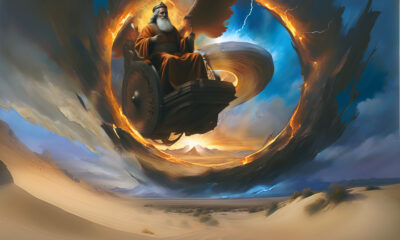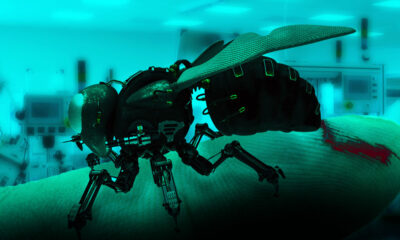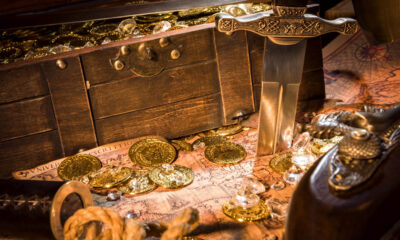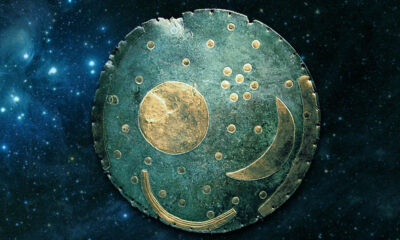Ancient Mysteries
Egyptian Mysteries – We Still Can’t Solve
The number of unsolved Egyptian mysteries keeps getting bigger. It’s time to rethink history.

Egypt is a country that has always been associated with the most incredible enigmas of history and continues to be a source of amazement and wonder. There are many Ancient Egyptian mysteries that have captured our imagination over the years. Let’s take a look at what we think are the top ten.
The Abydos Machines

Ancient Egyptian Mysteries – The Abydos Machines
For our first example let’s look at the mysterious hieroglyphics that were discovered in the 1960s and have still not been satisfactorily deciphered. Certainly they have baffled researchers for years. The Abydos Machines are a series of hieroglyphs that are found in the Temple of Seti I at Abydos in Egypt. The hieroglyphs depict images of modern technology, such as helicopters and rocket ships, but are believed to have been carved by the ancient Egyptians. There is some speculation that they may be a form of writing used only by royalty or priests, but this has never been proven to be true. Some researchers believe they prove that the ancient Egyptians had access to modern technology while others claim the shapes are just coincidental and caused by carving over the original design. The chances of producing one recognisable aircraft by over-carving would be exceptional, the chance of producing four maybe five is miraculous. The debate rages on.
No Depictions of Pyramid Building
 One of the most puzzling questions about the ancient A persistent Egyptian mystery is why there are no images or carvings showing them building pyramids. There are no carvings depicting the construction of any other Egyptian monuments either found anywhere in Egypt. This is really weird because the ancient Egyptians loved to paint and carve representation of their achievements – why not the pyramids. It’s possible that this lack of evidence is because the Egyptians were so secretive about techniques that they didn’t want outsiders to know how they did it. Others speculate that they were using secret advanced technology and were forbidden by the providers of that technology to record it. The lack of depictions or records is just beyond belief or common sense. As a result we still don’t know how they built the great pyramids and how they achieved what they did with such primitive tools.
One of the most puzzling questions about the ancient A persistent Egyptian mystery is why there are no images or carvings showing them building pyramids. There are no carvings depicting the construction of any other Egyptian monuments either found anywhere in Egypt. This is really weird because the ancient Egyptians loved to paint and carve representation of their achievements – why not the pyramids. It’s possible that this lack of evidence is because the Egyptians were so secretive about techniques that they didn’t want outsiders to know how they did it. Others speculate that they were using secret advanced technology and were forbidden by the providers of that technology to record it. The lack of depictions or records is just beyond belief or common sense. As a result we still don’t know how they built the great pyramids and how they achieved what they did with such primitive tools.
The Petrie Cores – compelling Egyptian mysteries
The Petrie Cores are a collection of ancient artefacts discovered by the British archaeologist William Flinders Petrie in 1889. A drill core is a tube of stone that is created when a hollow drill is used to remove a cylinder of stone from the base rock. That fact that these archaic cores have been found proves that the Ancient Egyptians were able to achieve something thousands of years ago that we would still find challenging today – they could drill through even the hardest granite.

Mysterious Egyptian Drill Cores
As an engineer, Petrie immediately recognised that he was looking at an archaeological anomaly. People have speculated that the use of copper cylinders spun with sand might work, but tests done on granite show that it would have taken a lifetime of spinning, used hundreds of copper tubes and left traces of copper for researchers to find which they did not. Some people believe that these artifacts are evidence for ancient contact with advanced civilizations. However, archaeologists say that this claim is based on flawed logic as advanced civilizations didn’t exist. The Petrie cores can still be viewed at the Petri Museum in London, UK.
A Mysterious Mummy Wrapped In A Linen Book
One of the most intriguing mysteries that surround the ancient Egyptians is the mummy wrapped in a mysterious book. The mummy was found in a tomb in Deir el-Bahri necropolis, which is located on the west bank of Luxor and is home to some of Egypt’s most famous temples. It was bought by Mihajlo Barić a Croatian official. He later discovered that this mysterious mummy was encased in an ancient manuscript which had been torn into strips and used to wrap around it before burial. There are still no answers as to why someone decided to wrap their dead loved one with pieces from such an old Etruscan document or where exactly it came from but there have been many attempts at deciphering its contents – all of which have failed. At this rate, who the lady was and what the document means may remain one of Ancient Egyptian Mysteries for ever.
Strangest of Egyptian Mysteries – The Dendera Lights

In the Temple of Hathor (the goddess of love and beauty) at Dendera, Egypt there are drawings which depict a scene where an Egyptian god is holding up two objects that resemble light bulbs with wires attached to them. It has been suggested that this was some sort of electrical device used for lighting the temple or casting spells on enemies during battles. You can clearly see the shape of the bulb with a filament depicted as a snake. These carvings are often used as an example of how ancient Egyptians might have created electricity using simple materials such as copper, zinc, and other metals. The relief has been dated back to around 1500 BC, making it one of the earliest examples of possible electrical technology known from history. Mainstream Egyptologist strong deny that there is any evidence here for the ancient electricity theory.
The Saqqara Bird

The Saqqara Bird – Egyptian Mysteries
One of the most well-known Egyptian mysteries is the Saqqara Bird. This early man-made flying device was designed by skilled craftsmen to mimic the appearance of a bird. The artifact was found in 1898 in a tomb at Saqqara, Egypt, and is believed to be the earliest known example of a flying machine. According to Egyptian historian Ahmed Osman, the Saqqara Bird was found alongside other “planes” that are now missing. He believes that these artifacts were part of an ancient “secret society” dedicated to inventing new vehicles for flight. What makes this device particularly interesting is that it features an upright fin as part of the tail just like an aircraft rather than a bird. The aerodynamics were also exception good. Replicas of the Saqqara Bird have been made a fly very well. It is also the only one of its kind which also raises the question why?
The Lost Land Of Punt

Searching for the Lost city of Punt
The Land of Punt, sometimes confused with Ta Seti, was a country mentioned in Ancient Egyptian texts and records. The ancient Egyptians used this land for trading goods like spices, gold, ivory, and ebony. Many believe it was located in the Horn of Africa where modern-day Somalia is today. Some people believe that Queen Hatshepsut might have visited there during her reign from 1479 BC to 1458 BC when she led trade missions with ships loaded with gifts including myrrh trees. There is no doubt it existed and no doubt that it was rich and important. We just can’t find it even with all our records and satellites. There are many theories ranging from catastrophic destruction of the land to the possibility that Punt or ‘Pwnt’ was extra-terrestrial in origin. We just don’t know how a well-known place could just vanish.
The Hidden chambers of the Great Pyramid – More Egyptian Mysteries to Uncover

Hidden Chambers of the Great Pyramid
The Great Pyramid of Giza is the only one of the Seven Wonders of the Ancient World that still stands today. Built by Pharaoh Khufu during Egypt’s 4th Dynasty, it is a marvel of engineering and architecture. As magnificent as this monument may be, there are still many Egyptian mysteries surrounding it—one being that there are secret chambers within its walls that have yet to be discovered. They could contain anything from the secrets of the Ancient Egyptians to vast treasures. The first person to suggest that there was something more to discover about this ancient wonder was Dr. David A. Edwards, who spent years studying readings from radar scans conducted inside its chambers.
In 2017, science researchers using particle physics were able to see through the stone. Their findings exposed a mysterious world full of hidden chambers. The largest of these secret rooms was a massive void nearly 100-feet-long that lay just above the pyramid’s grand gallery. Unfortunately getting these secret rooms is impossible without damaging the pyramid.
Machining Tool Marks

One of the most impressive examples of ancient machining is a mysterious pattern of grooves cut into a stone block that was uncovered in 1912 by archaeologist Sir William Flinders Petrie. The carving, which looks like it was made with a machine that has not yet been invented, is on one side of what appears to be an unfinished obelisk from Egypt’s Fifth Dynasty (2990-2850 BCE). Another example discovered by archaeologists in 1998 showed machine marks on an unfinished piece of granite weighing over two tons sitting inside Cairo’s Museum Of Egyptian Antiquities. In fact there are many examples remaining in the stones that could have only been made by modern equipment and yet these cuts and abrasions are thousands of years old. The fact is, Ancient Egyptians were able to cut stones with precision that still baffles modern scientists even though there have been attempts to explain it using everything from wet sand to copper pipes. The thing is, while these experiments show possibility, they completely lack all forms of practicality.
The Elongated Skull of Nefertiti and Akhenaten

The Elongated Skull of Queen Nefertiti
Pharaoh Akhenaten, his Great Royal Wife Nefertiti were both depicted in art as having very elongated skulls that were almost alien in appearance. Akhenaten also rejected the standard religious practices of ancient Egypt and focused on establishing a new religion based on worship of the sun. This was so heretic that after their deaths the priests of Egypt went to great lengths to try and wipe Akhenaten and his family from the historical record. Head binding was not a common practice in ancient Egypt and there are no other such depictions in the record of Egyptology. So why were their heads elongated and how was it achieved? Was in a natural genetic trait or something more otherworldly? Neither the body of Akhenaten nor Nefertiti have been officially found although some believe that the mummy identified as KV55 is that of Akhenaten although his skull is only slightly more elongated than normal.




























